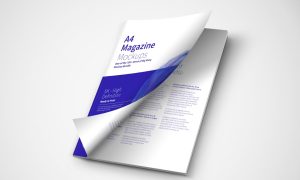RMS Titanic: A Metallurgical Problem
آر ام اس تایتانیک : یک مشکل متالورژیکی
ABSTRACT
On 14 April 1912, at 11:40 p.m., Greenland Time, the Royal Mail Ship Titanic on its maiden voyage was proceeding westward at 21.5 knots (40 km/h) when the lookouts on the foremast sighted a massive iceberg estimated to have weighed between 150,000 to 300,000 tons at a distance of 500 m ahead. Immediately, the ship’s engines were reversed and the ship was turned to port (left) in an attempt to avoid the iceberg. In about 40 seconds, the ship struck the iceberg below the waterline on its starboard (right) side near the bow. The iceberg raked the hull of the ship for 100 m, destroying the integrity of the six forward watertight compartments. Within 2 h 40 min the RMS Titanic sank.
Metallurgical examination and chemical analysis of the steel taken from the Titanic revealed important clues that allow an understanding of the severity of the damage inflicted on the hull. Although the steel was probably as good as was available at the time the ship was constructed, it was very inferior when compared with modern steel. The notch toughness showed a very low value (4 joules) for the steel at the water temperature (−2 °C) in the North Atlantic at the time of the accident.
جهت دانلود رایگان نسخه لاتین این مقاله اینجا کلیک کنید .

چکیده
کشتی مسافربری مجلل تایتانیک در 14 آپریل 1912، ساعت 11:40 شب، به زمان گرینلند، در سفر دریایی اول خود با سرعت 21.5 ناتس (40km/h) در حرکت بود که در آن موقع دیده بان از دکل کشتی یک کوه عظیم یخ را دید که تقریباً دارای وزنی بین 150,000 تا 300,000 تن در فاصله ی 500m جلوتر بود. بلافاصله، موتورهای کشتی برگردانده شدند و کشتی در تلاش به منظور جلوگیری از برخورد با کوه یخ به سمت بندر (چپ) چرخانده شد. در تقریبا 40 ثانیه، قسمت زیرخط آب سمت راست کشتی نزدیک به قسمت جلو به کوه یخ برخورد کرد. کوه یخ بدنه کشتی را به اندازه 100متر شکافت، و یکپارچکی شش محفظه آب بندی جلو را از بین برد. در عرض 2 ساعت و 40 دقیقه آر ام اس تایتانیک غرق شد.
بررسی متالورژیکی و آنالیز شیمیایی فولاد درنظرگرفته شده برای آر ام اس تایتانیک شواهد مهمی را به منظور درک شدت آسیب ضربه وارد شده روی بدنه ی کشتی نشان داد. اگرچه آن فولاد احتمالاً در زمانی که کشتی ساخته شد تا اندازه ای مناسب و در دسترس بود، در مقایسه با فولاد مدرن، آن بسیار نامرغوب بود. تافنس فرورفتگی به مقدار بسیار پایین (4ژول ) برای فولاد در دمای آب (-2oC) در اقیانوس اطلس شمالی در زمان حادثه نشان داده شد.
جهت دانلود ترجمه تخصصی و فارسی این مقاله می توانید وجه آنرا پرداخت نموده و بلافاصله دریافت نمایید.







نقد و بررسیها
هنوز بررسیای ثبت نشده است.